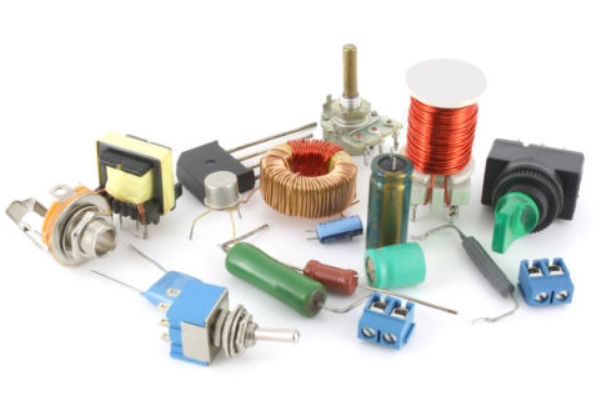Passive Electronic Components - Just What Are They?
Passive Components
PASSIVE COMPONENTS are made up of Capacitors, Inductors/Magnetics, Resistors, Substrates & Interconnects, Energy and High Frequency Components.
For detailed PRODUCT INFORMATION about these PASSIVE COMPONENTS and the world class manufactures who make them, CLICK HERE.
|
BASIC COMPONENTS |
ELECTROMECHANICAL COMPONENTS |
|
|
WHAT’S THE DIFFERENCE?
|
Active Components |
Passive Components |
|
Active Device transforms and injects power or energy into a circuit. |
Passive Device utilizes power or energy into a circuit. |
|
Examples: Diode, Transistor, SCR, ICs, DC generator, Current & Voltage sources etc. |
Examples: Resistors, Capacitors, Inductors, Transformer, Motors etc. |
|
Active element produces energy in the form of voltage or current |
Passive element stores energy in the form of voltage or current. |
|
They have function and provide power gain (Amplifier). |
They do not have function provide power gain. |
|
It can control the flow of current. |
It cannot control the flow of the current. |
|
Active components require an external & conditional source to operate in the circuit. |
Passive Components do not require any external source to operate in the circuit. |
|
They have gain more than 1, so they can amplify the signal. |
They have gain less than 1, so they can’t amplify the signal. |
|
They are energy donor. |
They are energy acceptor |
|
They lay in Linear category |
They lay in Non-Linear category. |
Passive electronic components are components that consumes energy. It does not produce energy, is incapable of power gain and requires no electrical power to operate. They simply absorb energy. A typical example of passive electronic components would be resistors and capacitors. For a closer look at these devices, let’s look below.
Capacitors – A capacitor (originally known as a condenser) is a passive two-terminal electrical component used to store energy electrostatically in an electric field. The forms of practical capacitors vary widely, but all contain at least two electrical conductors (plates) separated by a dielectric (i.e. insulator). The conductors can be thin films, foils or sintered beads of metal or conductive electrolyte, etc. The “nonconducting” dielectric acts to increase the capacitor’s charge capacity. A dielectric can be glass, ceramic, plastic film, air, vacuum, paper, mica, oxide layer etc. Capacitors are widely used as parts of electrical circuits in many common electrical devices. Unlike a resistor, an ideal capacitor does not dissipate energy. Instead, a capacitor stores energy in the form of an electrostatic field between its plates.
Resistors – A resistor is a passive two-terminal electrical component that implements electrical resistance as a circuit element. Resistors act to reduce current flow, and, at the same time, act to lower voltage levels within circuits. In electronic circuits resistors are used to limit current flow, to adjust signal levels, bias active elements, terminate transmission linesamong other uses. High-power resistors that can dissipate many watts of electrical power as heat may be used as part of motor controls, in power distribution systems, or as test loads for generators. Resistors may have fixed resistances that only change a little with temperature, time or operating voltage. Variable resistors can be used to adjust circuit elements (such as a volume control or a lamp dimmer), or as sensing devices for heat, light, humidity, force, or chemical activity.
Transformer – A transformer is an electrical device that transfers energy between two or more circuits through electromagnetic induction.A varying current in the transformer’s primary winding creates a varying magnetic flux in the core and a varying magnetic field impinging on the secondary winding. This varying magnetic field at the secondary induces a varying electromotive force (emf) or voltage in the secondary winding. Making use of Faraday’s Law in conjunction with high magnetic permeability core properties, transformers can thus be designed to efficiently change AC voltages from one voltage level to another within power networks.
There are two types of passive components, dissipative and lossless. An example of dissipative is a resistor, which does nothave the capacity to absorbpower from an external circuit. Lossless does not have an input or output power flow. Examples of these would be Gyrators, transformers and capacitors.
Reference: Wikipedia




